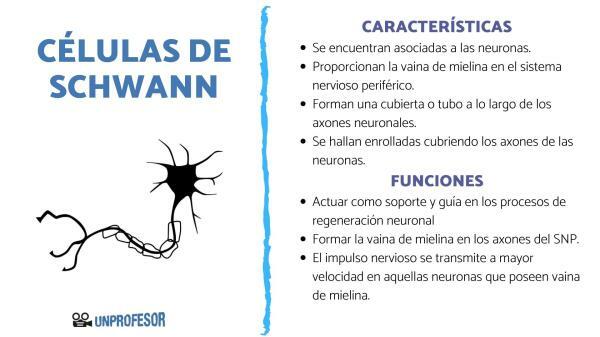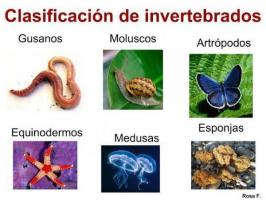SCHWANN cells: functions and characteristics

Have you ever thought about all the activities that take place in our body at the same time? While a person runs, he also breathes and his heart beats fast, he can feel each footstep, the wind brushing his skin and, at the same time that he listens to music with the headphones, he watches the road. All these functions can be carried out simultaneously thanks to the control function of the organism. The nervous system is responsible for perceiving stimuli from the environment and coordinating the internal functioning of the body.
The main function of nervous system is the communication between its cells and with the glands or muscles that it innervates, this depends on the capacity of receive, produce and transmit signals in the form of a nerve impulse. For its study it is divided into: central nervous system (CNS) and peripheral nervous system (PNS). The cells that are part of this system are: neurons and glial cells.
In this lesson from a Teacher we will tell you what are Schwann cells: functions and characteristics.
The cells of the nervous system are neurons and the glial cells. Within the glial cells we find 3 types:
- Forming part of the central nervous system (CNS) we find the ASTROCYTES and OLIGODENDROCYTES.
- Forming part of the peripheral nervous system (PNS) we find the SCHWANN CELLS.
The Schwann cells are a type of glial cell belonging to peripheral nervous system (SNP). The PNS is made up of nerves, they are elongated, cylindrical extensions formed by the union of neuronal axons, similar to cables, and by nerve ganglia.
In order to understand the functioning of this type of cell, it is necessary to know the structure of a neuron, since the Schwann cells are found on it.
The neuron has 3 parts: a BODY or soma (where the nucleus is located) with extensions called DENDRITES, a wider and longer prolongation called AXON that finally branches and in each termination we find a BUTTON SYNAPTIC.
parts of a neuron
The parts of the neuron are the following:
- Cellular body: It has the machinery that carries out the vital processes of the cell. Dendrites act as message receivers, they are the "antennas" of neurons.
- axon: Long tube covered with myelin. It carries information in the form of a nerve impulse from the cell body to the terminal buttons.
- terminal buttons: They are found at the ends of the axon branches, their function is to secrete neurotransmitters that can excite or inhibit a muscle, a gland or another neuron.
There are some diseases that can damage Schwann cells, mainly by causing a loss of the myelin sheath, they are called demyelinating diseases. The deficiency of the fatty matter that covers the nerves can have different consequences in our body, since it affects the transmission of the nerve impulse. They can cause loss of movement, feeling and strength.



